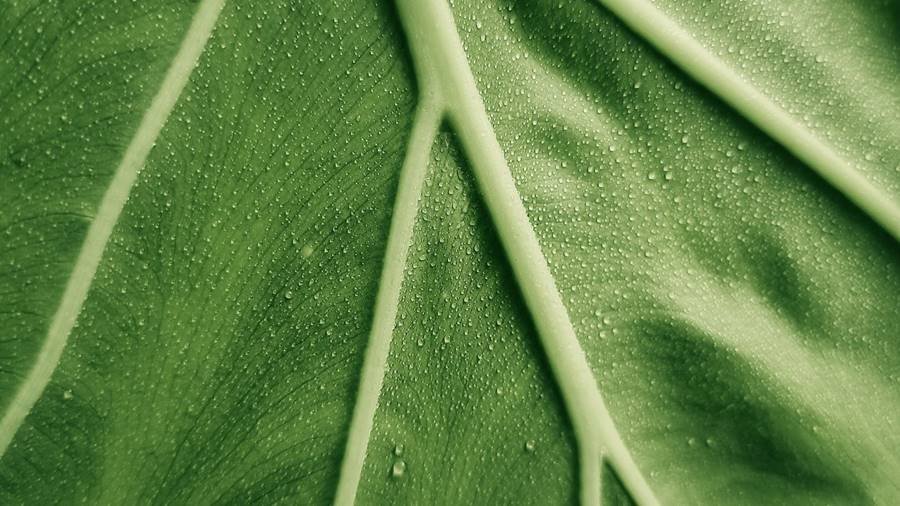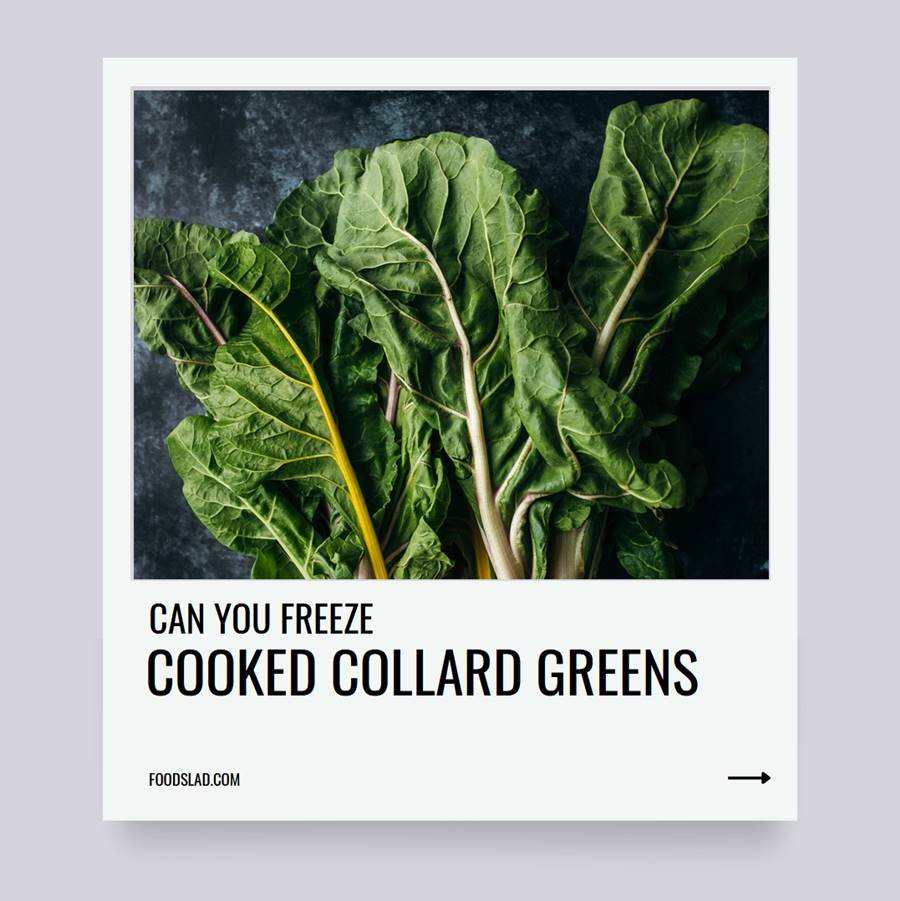Collard greens are a staple in Southern cuisine and have gained popularity worldwide due to their robust flavor and impressive nutritional profile. If you’ve found yourself with a surplus of cooked collard greens, you might be wondering if you can freeze them to extend their shelf life without compromising taste and nutritional value. In this blog post, I have discussed the specific query which is can you freeze cooked collard greens in a detailed way?

Can You Freeze Cooked Collard Greens?
The simple answer is yes, you can freeze cooked collard greens. However, there are certain factors to consider to ensure that they maintain their flavor and texture during the freezing process. Collard greens have a high water content, affecting their quality when frozen. Proper preparation and packaging are key to preserving their taste.
How to Freeze Cooked Collard Greens: A Guide
To freeze your cooked collard greens successfully, follow these steps to ensure they come out of the freezer as delicious as they went in. Begin by allowing your collard greens to cool completely. Once cooled, separate the greens into portions that you’re likely to use in one sitting. This makes it easier to defrost only the amount you need, reducing the risk of repeated thawing and refreezing.
No to Freezer Burn –
Freezer burn can diminish the quality of your collard greens. To avoid this, invest in high-quality airtight containers or heavy-duty freezer bags. The key is to minimize exposure to air, which can lead to moisture loss and result in freezer burn. Label each container with the date to ensure you use the oldest ones first, maintaining a rotation of frozen collard greens.
The Blanching Technique –
Blanching, a pre-freezing step, can greatly enhance the success of freezing cooked collard greens. This technique involves briefly boiling the greens and then rapidly cooling them in an ice bath. Blanching helps to retain the color, flavor, and texture of the collard greens, making them more freezer-friendly.
Mastering the Blanching Process –
To blanch your collard greens, follow these steps. First, bring a large pot of water to a rolling boil. While waiting for the water to boil, prepare a bowl of ice water. Next, carefully add the collard greens to the boiling water and let them cook for about 1 to 2 minutes. The goal is to slightly soften them without fully cooking. Once blanched, promptly transfer the greens to the ice water to halt the cooking process.
Flash-Freezing for Optimal Results –
Flash-freezing your blanched collard greens before packaging them for long-term storage can prevent them from sticking together and preserve their individuality. Arrange the blanched greens on a baking sheet in a single layer, making sure they aren’t touching each other. Place the baking sheet in the freezer for a few hours until the greens are frozen solid.
Packing Like a Pro –
After flash-freezing, it’s time to pack your collard greens for their icy hibernation. Use airtight containers or freezer bags, removing as much air as possible to prevent freezer burn. Consider portioning them according to your meal needs, making it easy to defrost just the right amount.
Labeling and Dating –
Don’t underestimate the power of labeling and dating your frozen collard greens. As you build up a stash of frozen greens, it’s easy to lose track of how long each batch has been in the freezer. Clearly mark each container or bag with the date you froze them, enabling you to use the oldest ones first and ensuring maximum flavor and freshness.
The Defrosting Process –
When it’s time to enjoy your frozen collard greens, defrosting them properly is crucial to maintain their quality. The best way to defrost collard greens is to transfer the container from the freezer to the fridge a day or two before you plan to use them. Slow and steady defrosting helps preserve their texture and taste.
Reviving Flavor and Texture –
Once your collard greens are fully defrosted, it’s time to bring them back to life. Gently reheat them on the stovetop in a covered pot over low to medium heat. You can also add a splash of broth, a drizzle of olive oil, or a sprinkle of your favorite seasonings to enhance the flavor. Avoid overcooking, as collard greens can become mushy.
Tips for best results –
- Blanching: Some sources recommend blanching the collard greens before freezing to preserve color and texture. Blanching involves briefly boiling the greens, followed by an ice water bath to halt the cooking process. However, blanching can slightly affect the flavor and nutrient content.
- Avoid Overcooking: When cooking the collard greens, avoid overcooking them, as they will become mushy when reheated.
- Seasoning: If your recipe includes seasonings, it’s a good idea to slightly under-season the greens before freezing. This allows for adjustments when you reheat them later.
- Usage: Frozen collard greens are excellent for adding to soups, stews, casseroles, and stir-fries. They might lose a bit of their crunchiness after freezing, so they’re best suited for cooked food.
How Long Does Cooked Collard Greens Last in the Fridge?
Before you go on freezing your cooked collard greens, it’s essential to understand their shelf life in the refrigerator. When stored properly in an airtight container, cooked collard greens can last for about 3 to 5 days in the fridge. Beyond this timeframe, the greens may start to lose their freshness and taste.
Freezing collard greens without blanching –
While blanching is a common method used to preserve the quality of vegetables before freezing, it’s possible to freeze collard greens without blanching. However, keep in mind that blanching helps to preserve color, texture, and flavor while also destroying enzymes that can cause loss of flavor and nutrients during frozen storage. Skipping blanching might result in slightly compromised quality, but it’s still doable. Here’s how you can freeze collard greens without blanching:
- Clean and Prepare- Start by washing the collard greens thoroughly under cold running water. Remove any damaged or discolored leaves. Trim the stems and cut the leaves into your desired size.
- Blot Dry- After washing and cutting, gently pat the collard greens dry with paper towels. Excess moisture can lead to freezer burn and a decrease in quality.
- Portion- Divide the collard greens into portion sizes that you would typically use in a single cooking session. This will make it easier to take out only what you need from the freezer without thawing the entire batch.
- Packaging- Place the portions of collard greens in airtight freezer-safe bags or containers. Remove as much air as possible from the bags before sealing to prevent freezer burn. You can also use a vacuum sealer for optimal results.
- Label and Date- Use a permanent marker to label the bags or containers with the date of freezing. This will help you keep track of their freshness.
- Freeze- Place the sealed bags or containers in the freezer. Try to place them in a single layer initially to allow them to freeze quickly.
- Flash Freezing- If you have the space, you can spread the collard greens in a single layer on a baking sheet and freeze them for a couple of hours before transferring them to bags or containers. This prevents the pieces from sticking together.
- Use within 6-12 Months- While blanched vegetables can usually be stored for 8-12 months, collard greens that are frozen without blanching are best used within 6 months for better quality.
Conclusion –
Freezing cooked collard greens is a practical way to prevent waste and enjoy this nutritious vegetable throughout the year. By following the proper steps and tips outlined in this guide, you can ensure that your frozen collard greens maintain their flavor and nutritional value, allowing you to savor their deliciousness whenever you desire a taste of comfort food. If you have any suggestions regarding whether can you freeze cooked collard greens, please feel free to comment down below.

